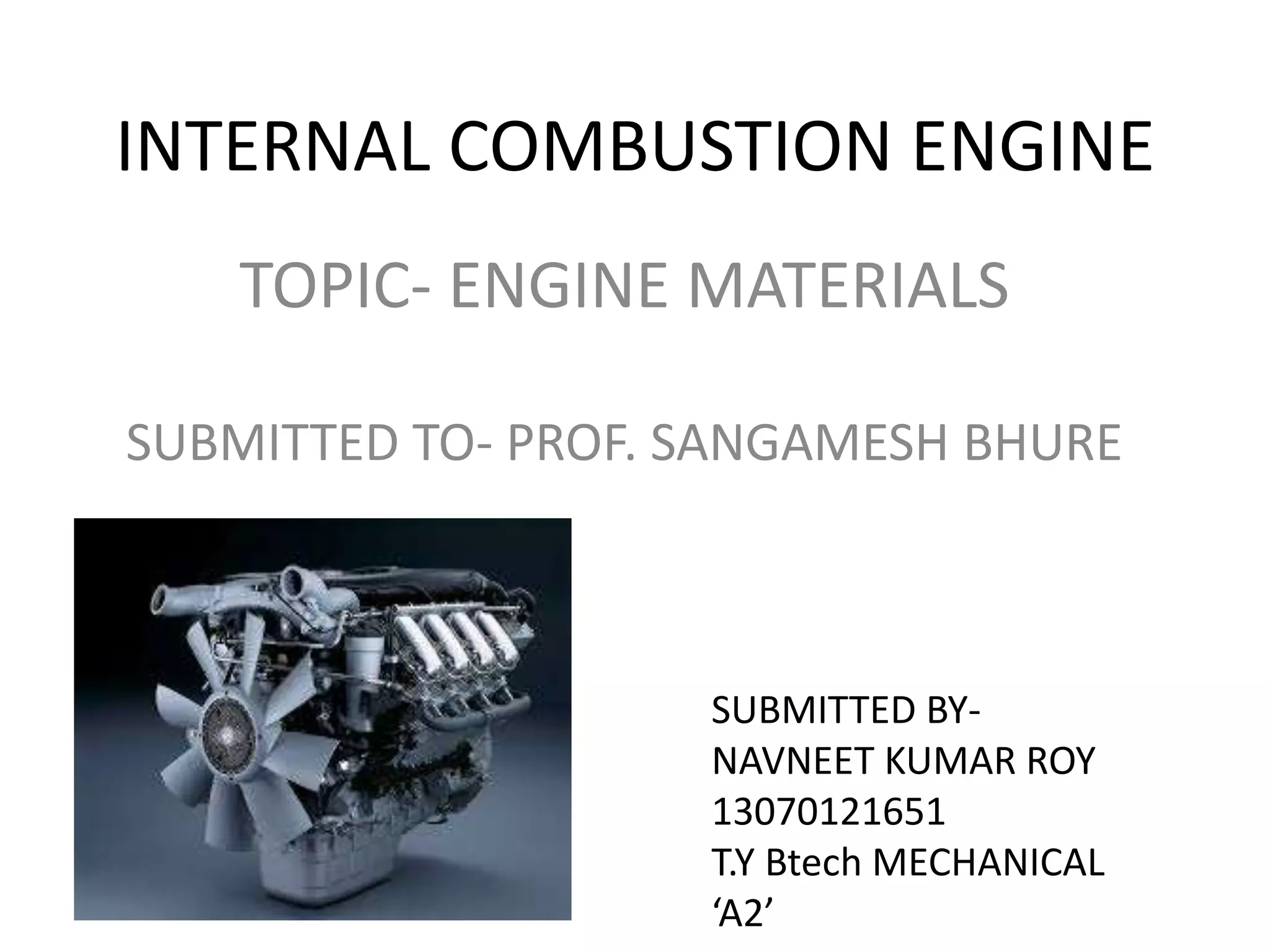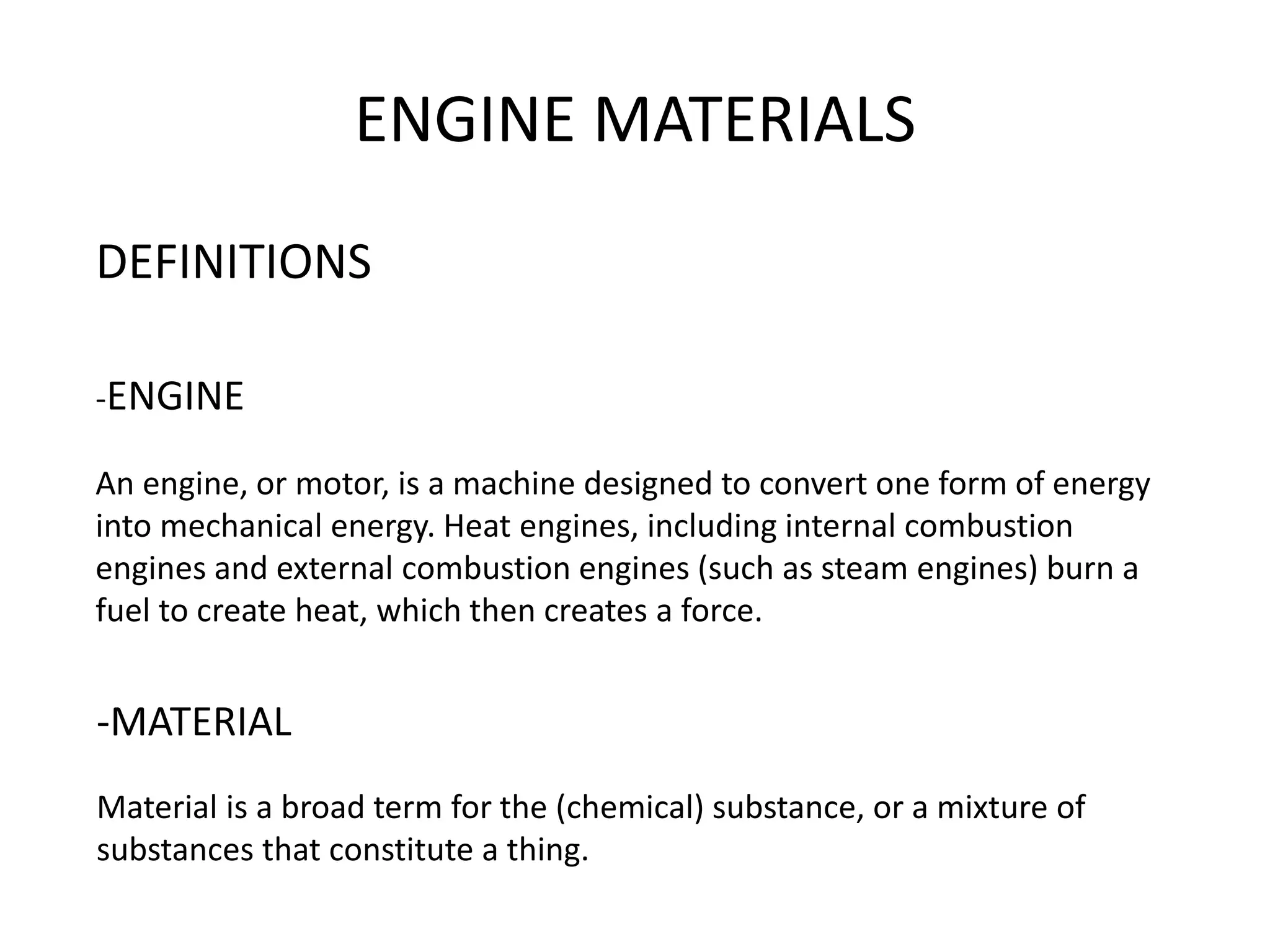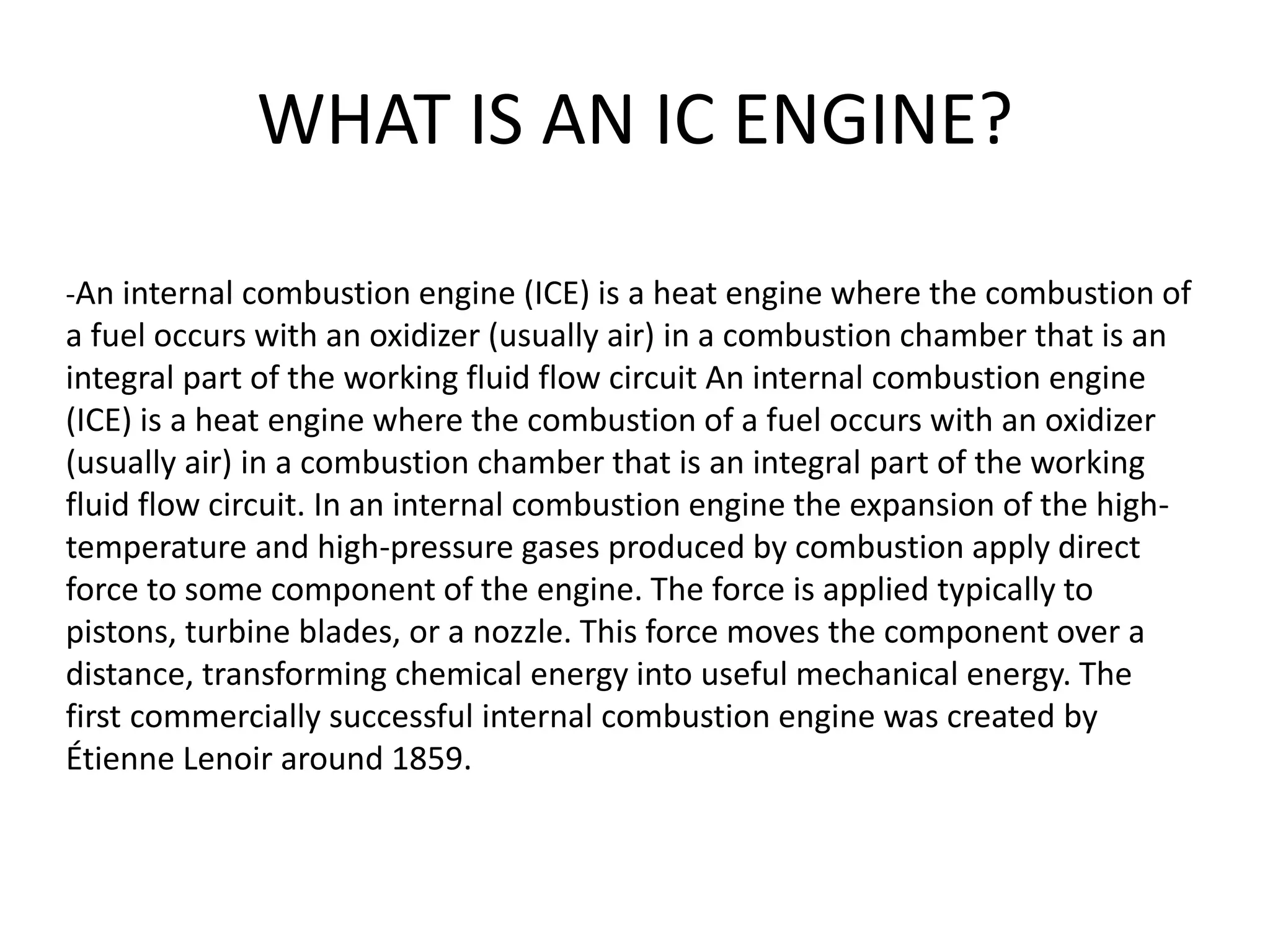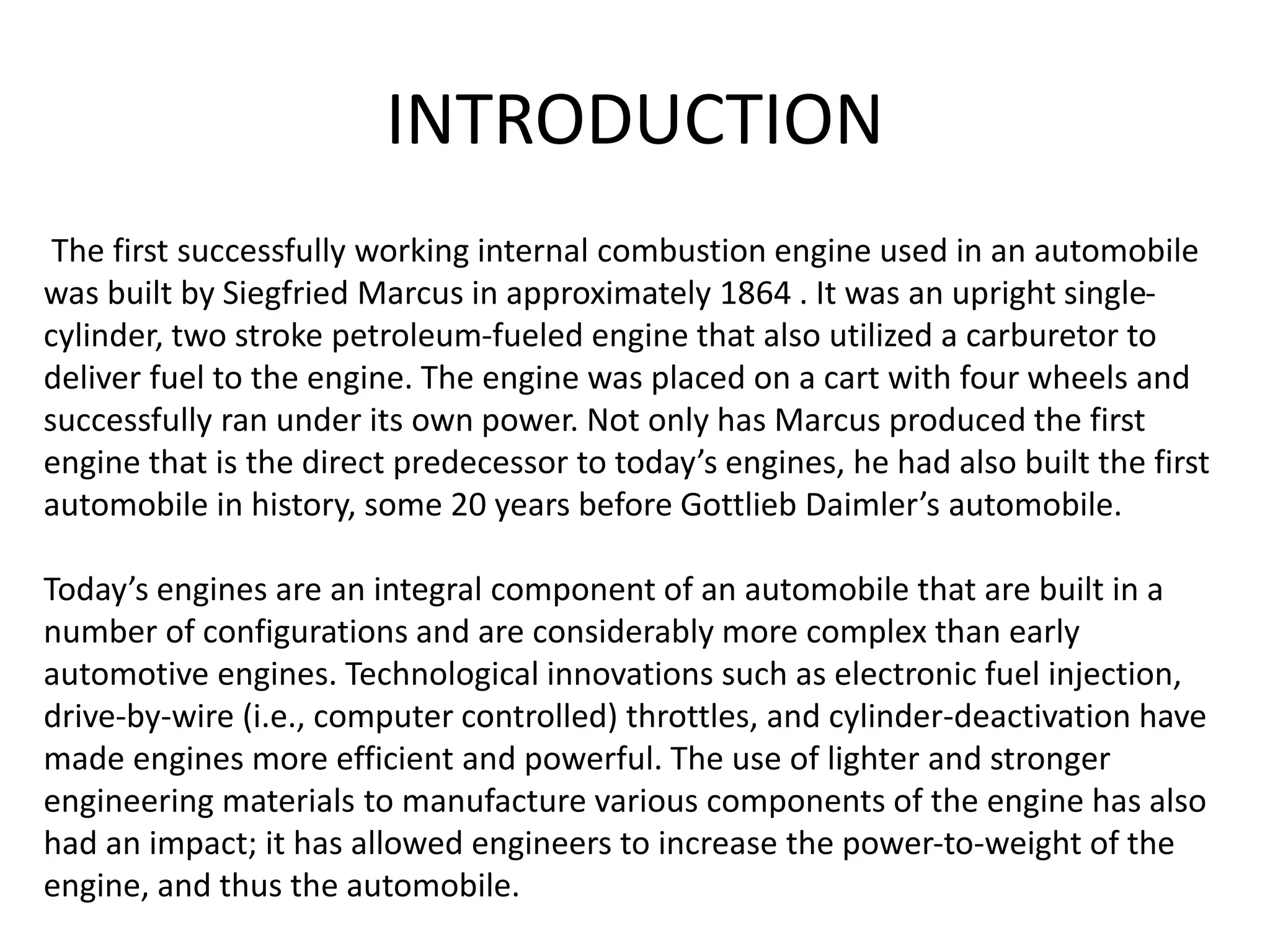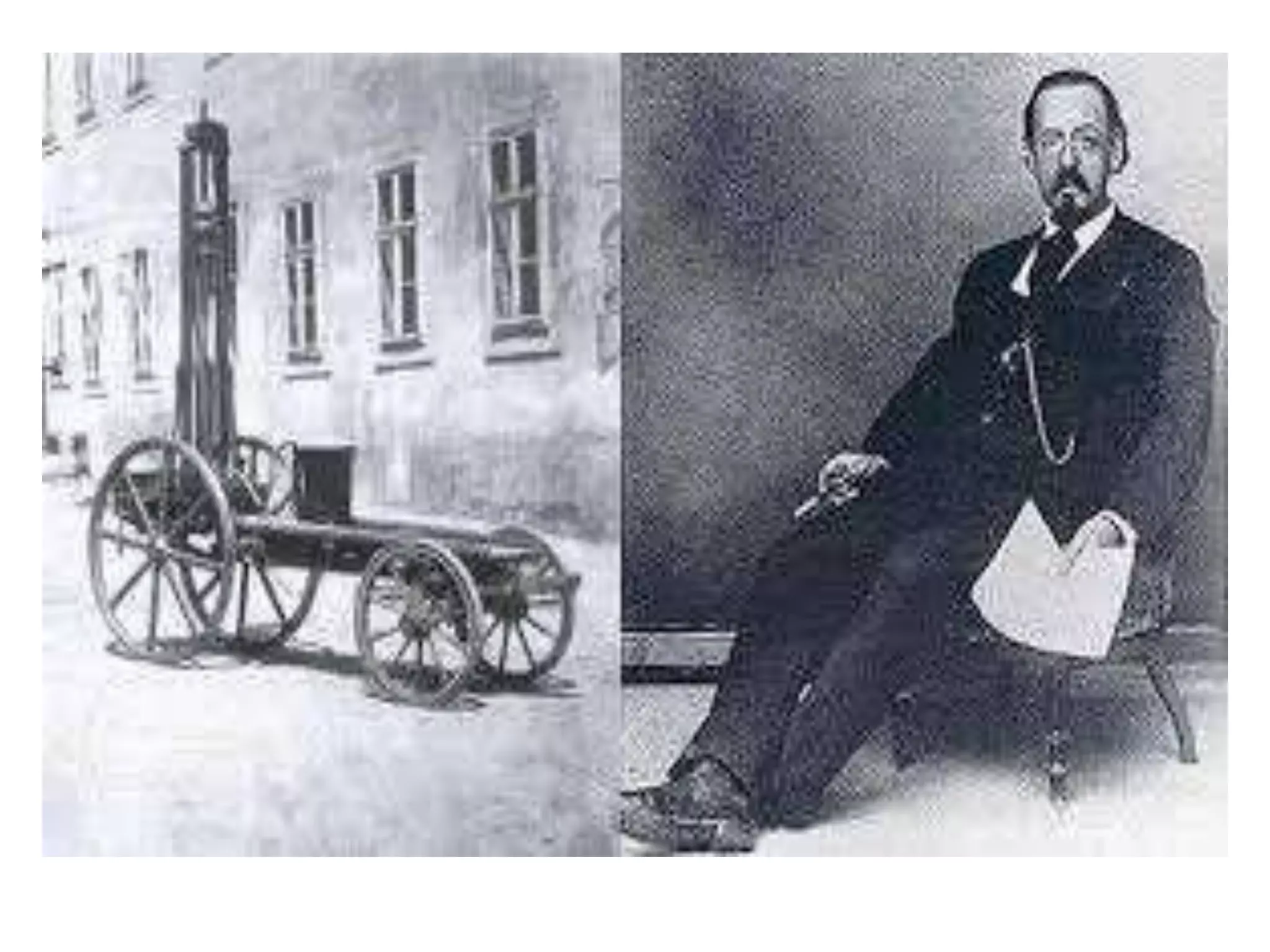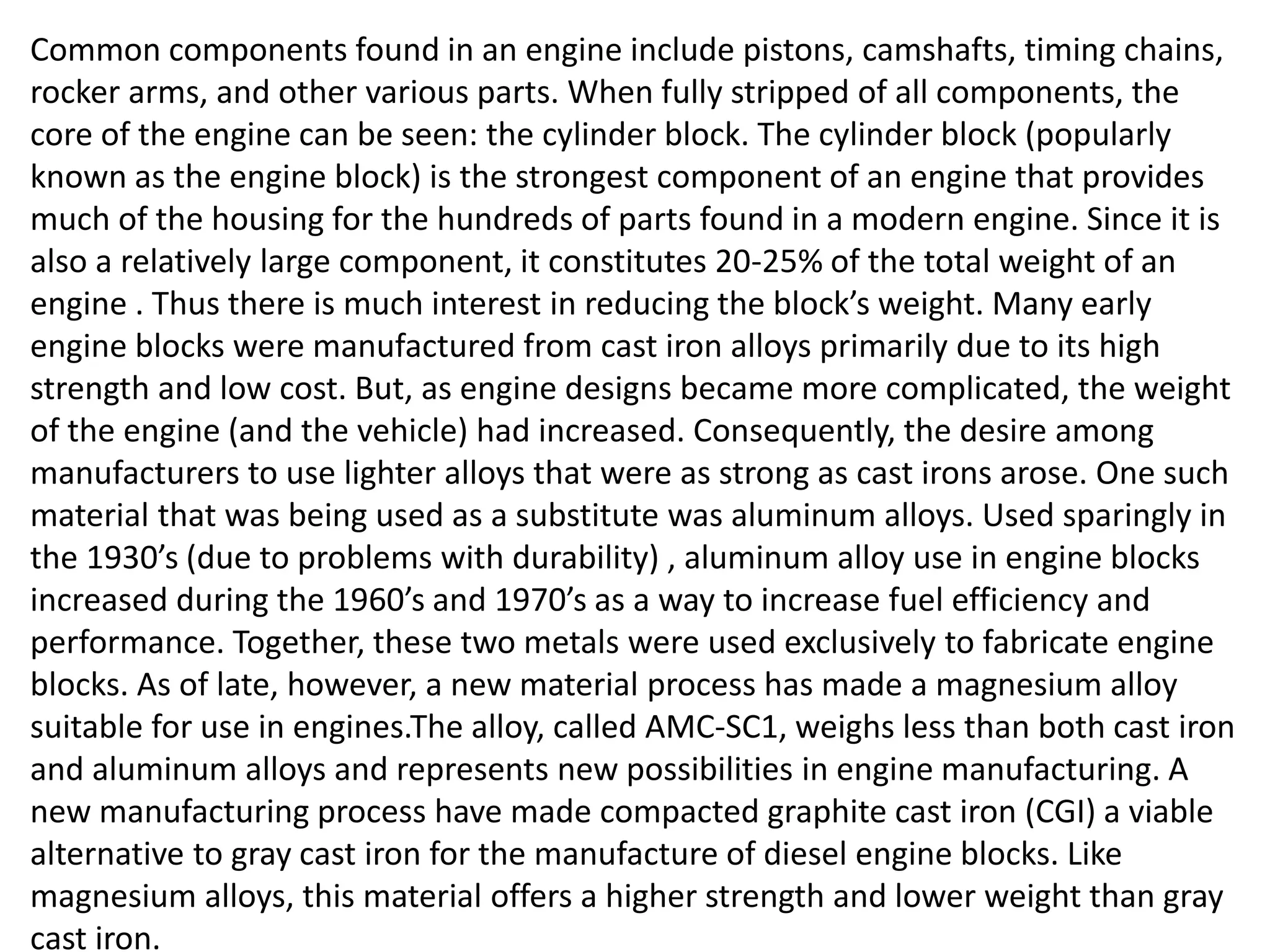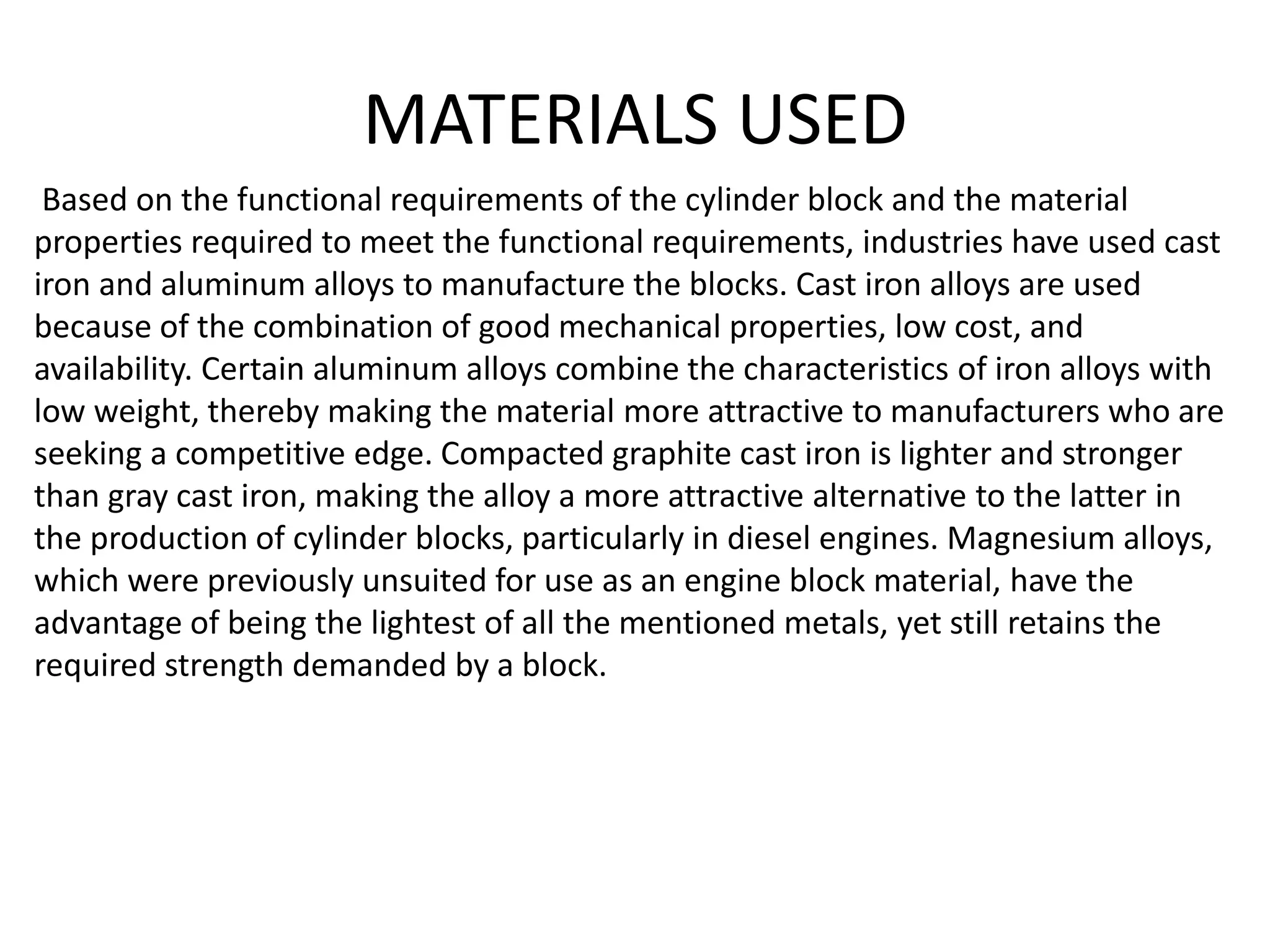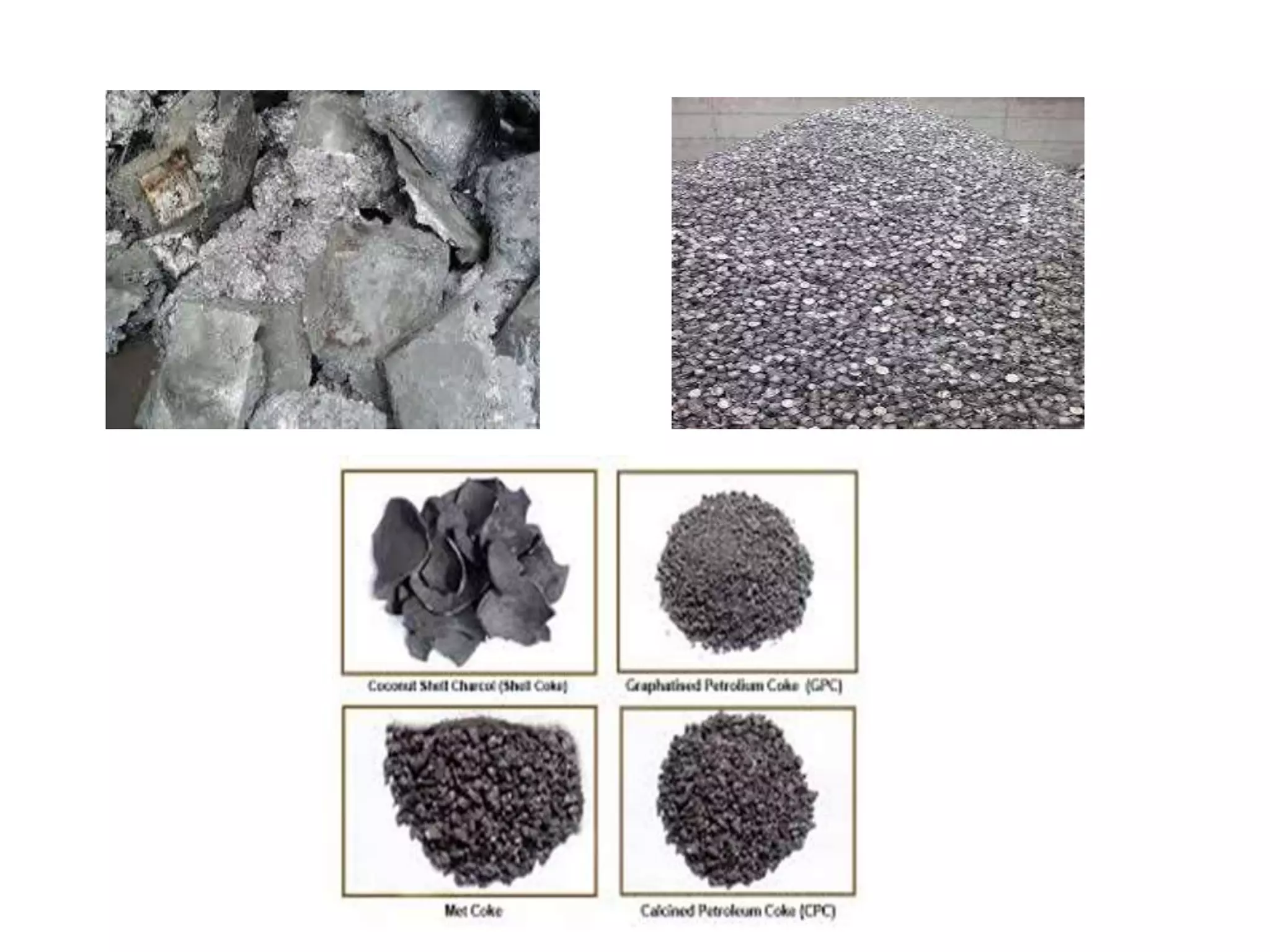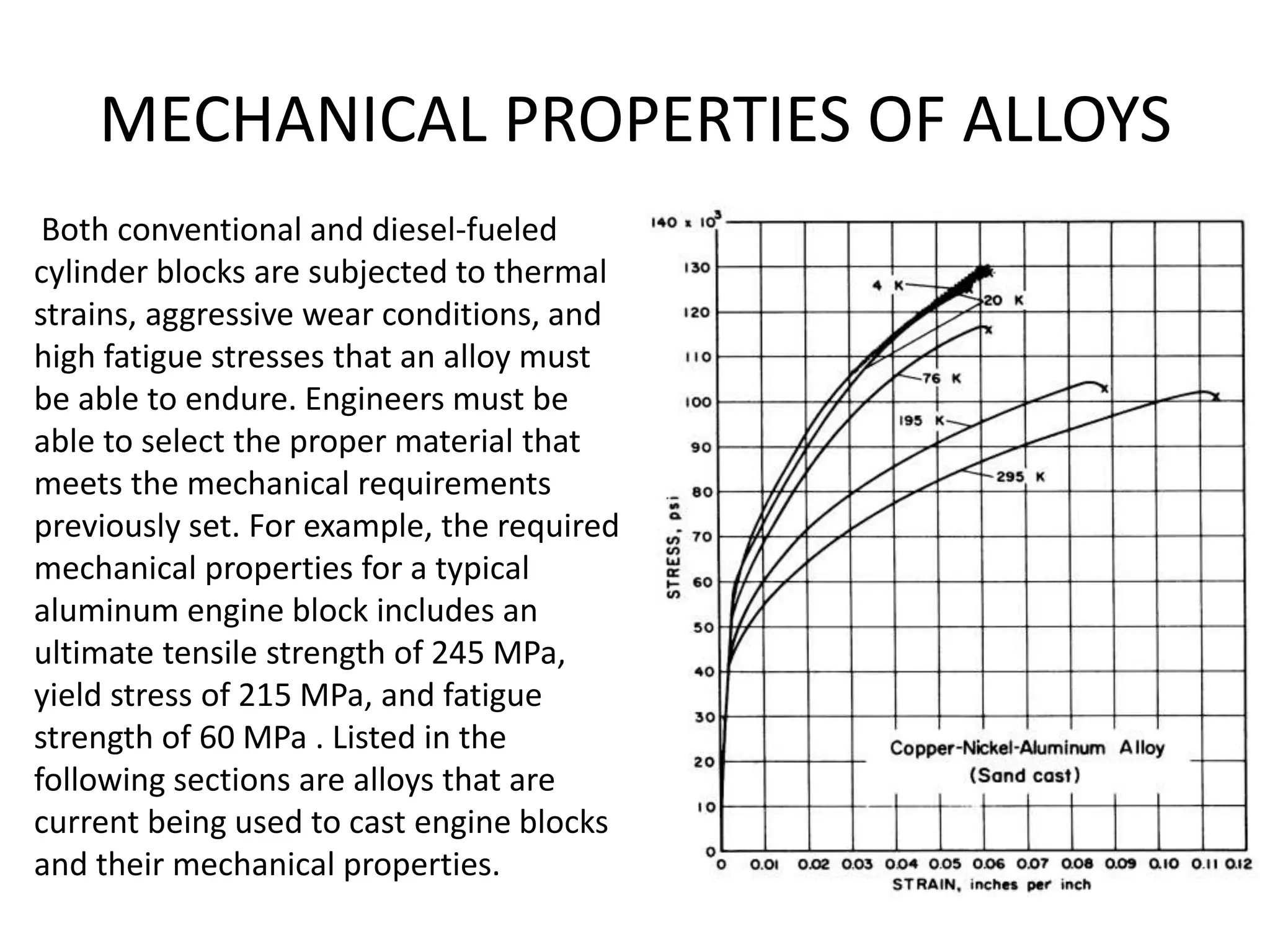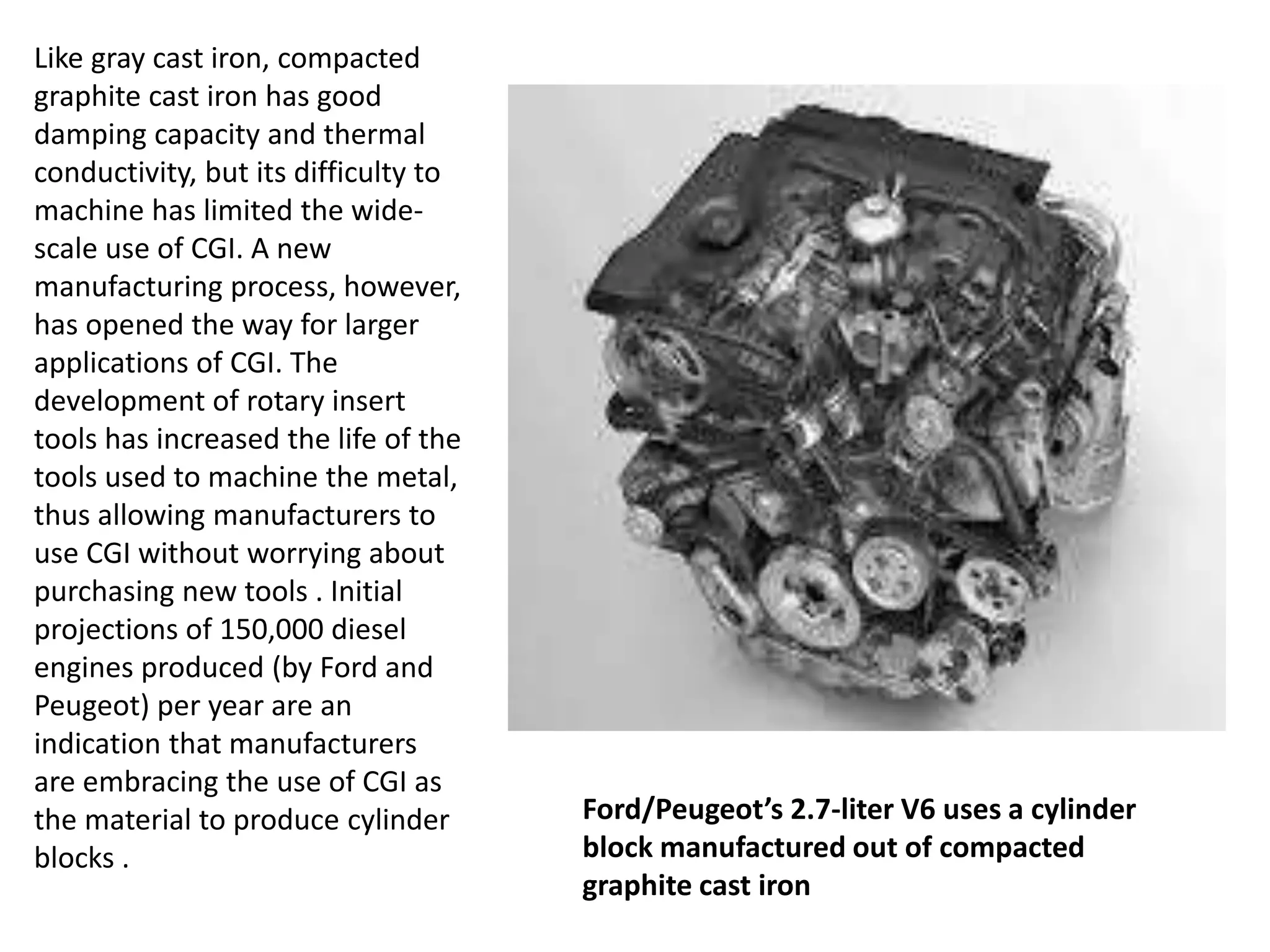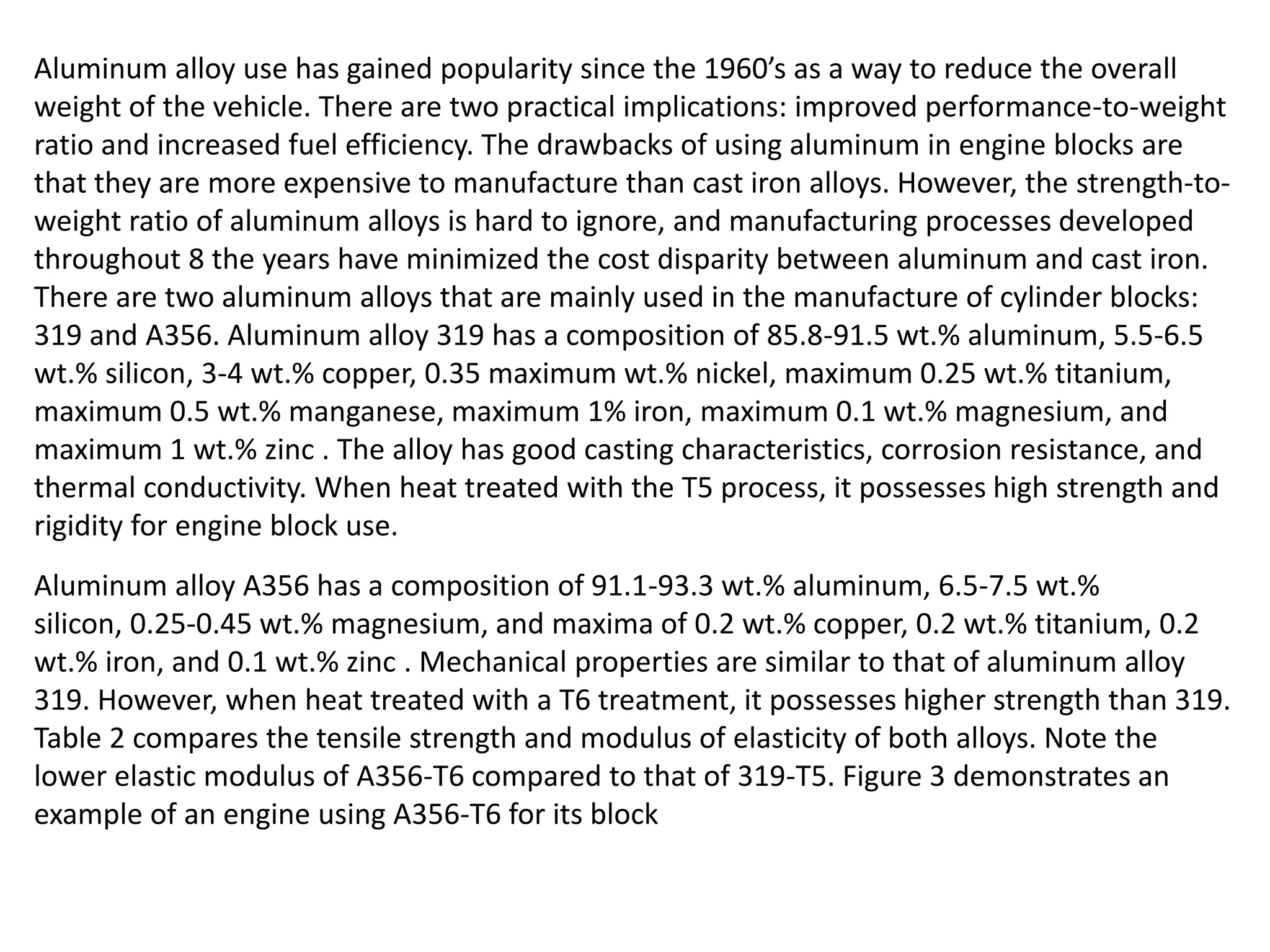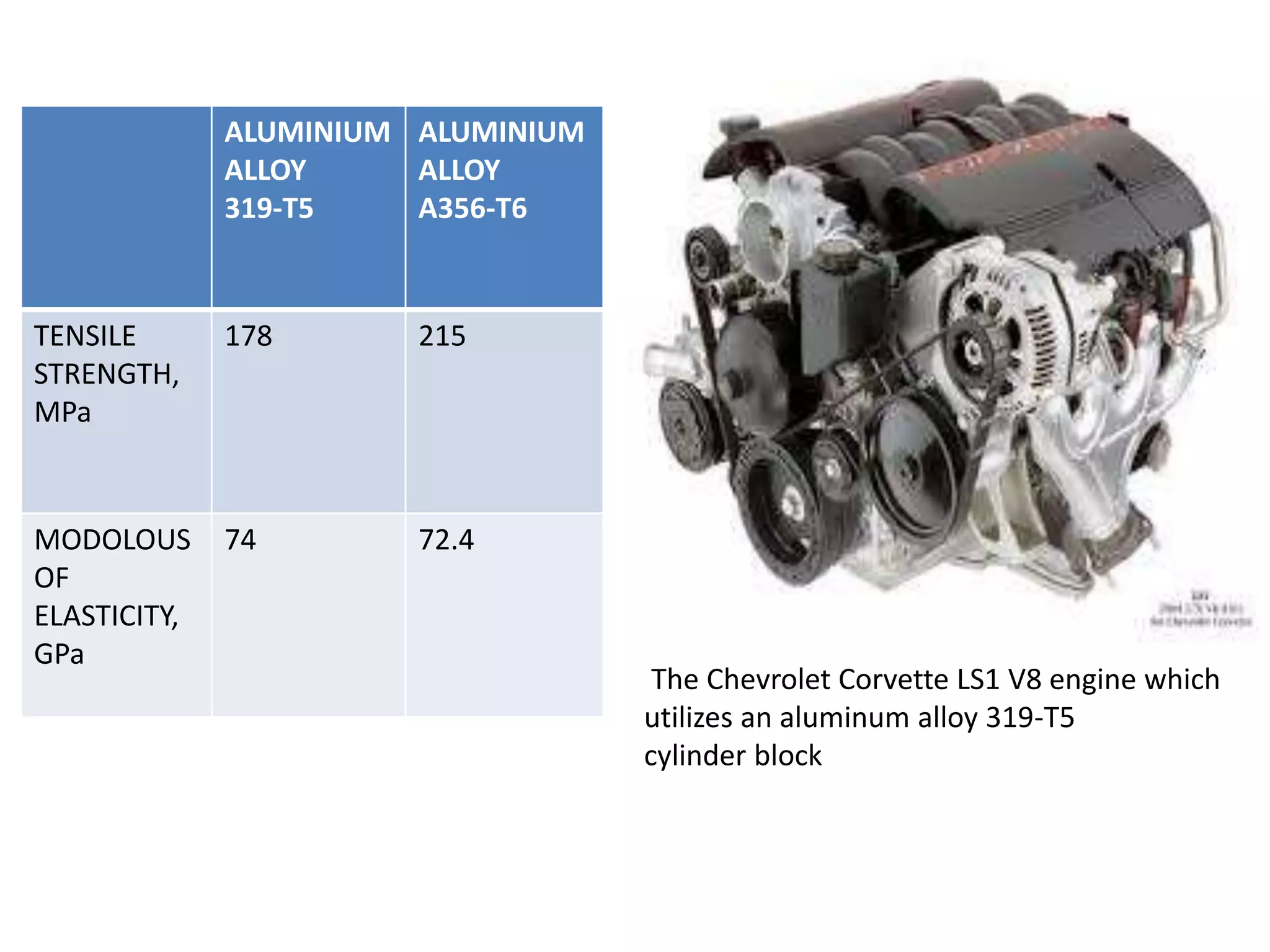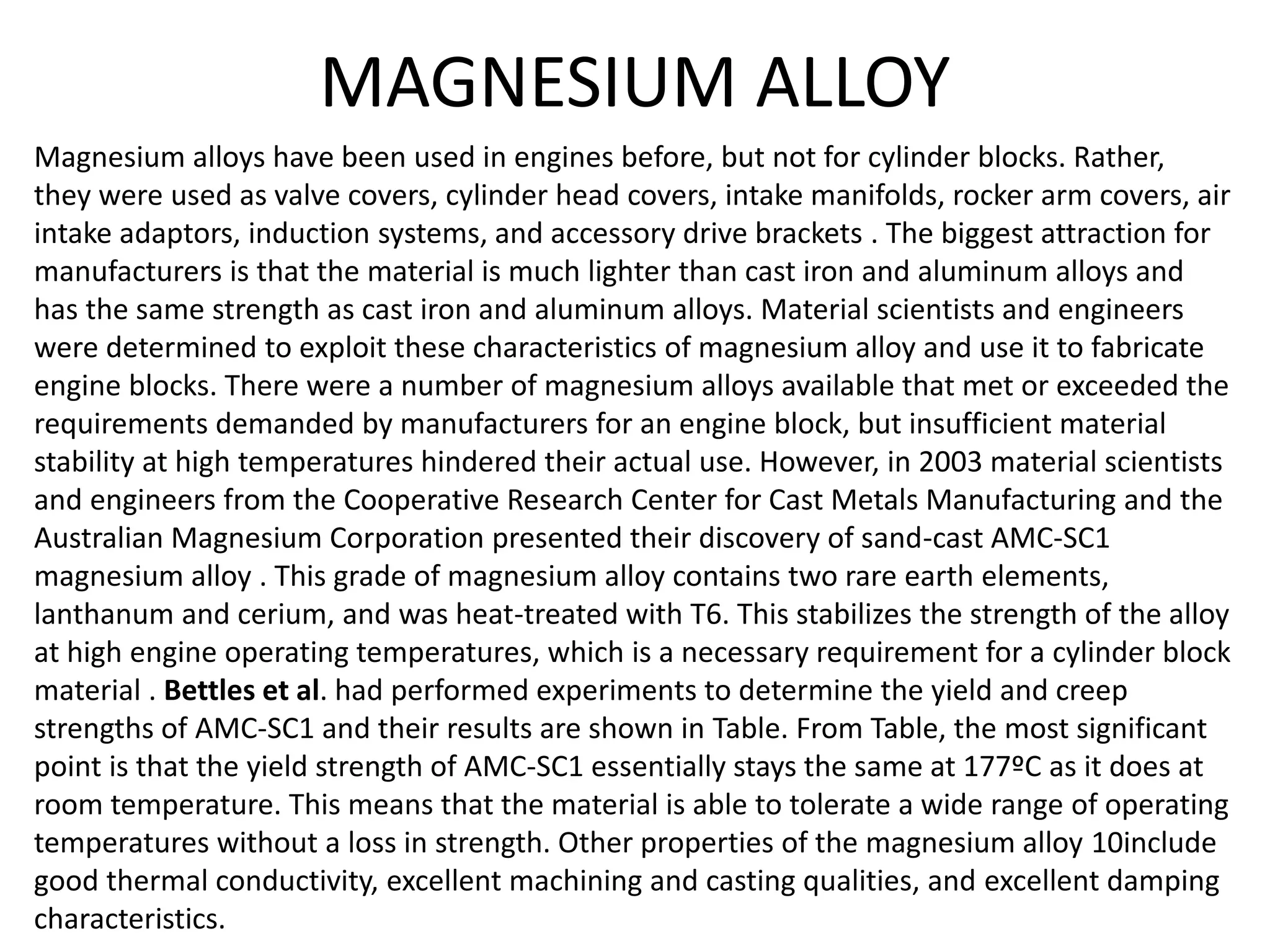The document discusses materials used for internal combustion engine blocks. It describes the functional requirements of an engine block including withstanding high pressures and temperatures. Common materials used are cast iron alloys and aluminum alloys due to their strength, low cost, and availability. Compacted graphite iron is also used as it is lighter and stronger than gray cast iron. The mechanical properties of these alloys allow them to meet the demands of an engine block.
